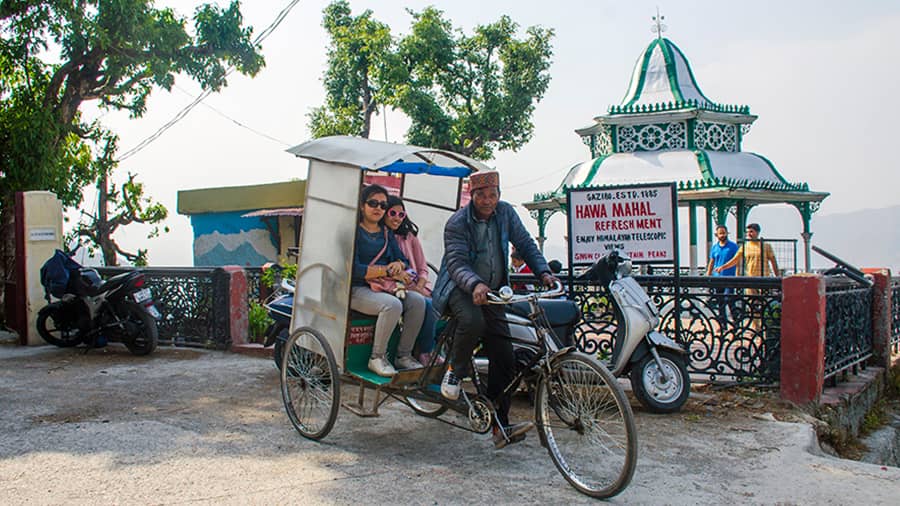Hills stations and cycle rickshaws don’t go hand in hand, but think again, as Mussoorie has its share of cycle rickshaws and is a popular mode of transport. This is due to the fact that a large tract of land surrounding the hill station is flat, making it easily accessible for pedal-powered vehicles. Moreover motor vehicles are not allowed in large sections of the mall area and therefore, rickshaws make a good substitute.
History of rickshaws in Mussoorie
The rickshaws of Mussoorie have a long history dating back to the days of British Raj. During the middle of the 19th century, Mussoorie started developing as a hill station. It started serving as a summer retreat to the British officers, who found the place ideal for escaping the plains of India during the hot season.
Movement within the city was difficult, as there were hardly any modes of transport. So, in the 1890s, an Indian business man came up with the idea of introducing rickshaws in Mussoorie, which was gladly accepted by the British administration. He was even provided with a workshop space, where the rickshaws could be built
A symbol of elitism
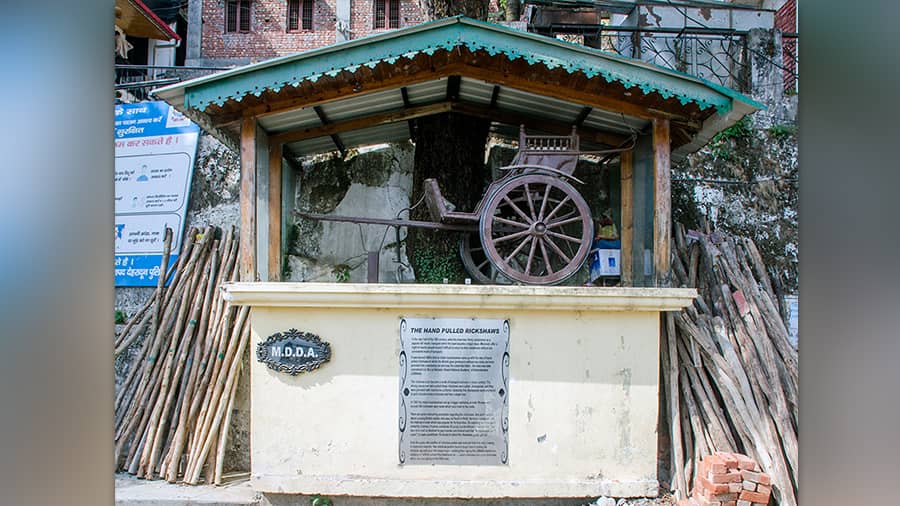
An old wooden hand-pulled rickshaw on display
The rickshaws soon became a popular mode of transportation. It was even a symbol of elitism. To add to this, the rickshaw pullers were provided with impressive uniforms. The rickshaw usually carried one to two passengers. They were pulled by four or five rickshaw pullers, who were known as jhampanies. At the turn of the century, the rickshaws in Mussoorie numbered about 300.
There have been interesting stories about the communication, or rather miscommunication, between the jhampanies and their European passengers. According to one story, once the jhampanies demanded 4 annas (1/4 of a rupee) from a British officer after he had reached his destination. The officer, who was not familiar with the language and numerical, disagreed and wanted to pay one rupee. No wonder the jhampanies at once agreed.
In 1995, the local administration decided to replace the hand-pulled rickshaws with the cycle rickshaws, which still continues its journey through the streets of Mussoorie. In 2017, there was an initiative to turn the cycle rickshaws into battery powered e-rickshaws, but the plan is yet to be implemented.
Today, the rickshaw stand in Mussoorie is located next to the ropeway stand. Opposite the rickshaw stand is a covered platform displaying an old wooden hand-pulled rickshaw. A brief write up on the history of rickshaws in Mussoorie is also provided. Sadly, the beautifully decorated platform is almost obscure and part of it is covered with construction material.
Provide leisure rides to tourists
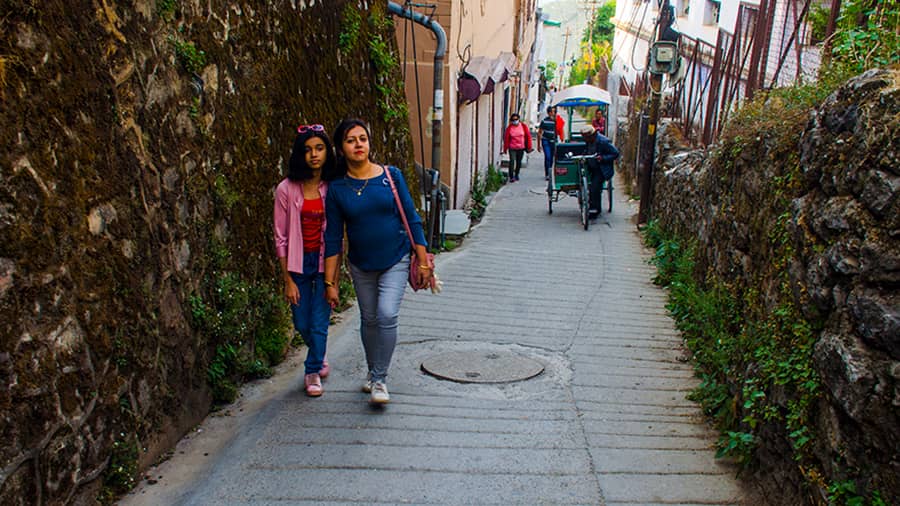
In step sections, tourists take a walk while the rickshaw puller pulls up his vehicle
The rickshaws mainly ferries passengers to the Library More (crossing), where the Mussoorie bus stand is located. The rickshaw also provides leisure rides to tourists covering a few spots within the town. The rickshaw follows a circular route with stops at certain points of interest. First is the Hawa Mahal, contrary to the name there is no mahal but just a pavilion, where tourists can enjoy the hawa (wind) along with great views of the mountains.
After Hawa Mahal, the route follows the Camel Back Road, which has a slight upward incline. In some stretches the rickshaw puller has to pull his vehicle up. The road leads to the Camel Back Road Cemetery, which consists of a Parsi and Christian section. The Parsi section has a small gate with the year 1920 mentioned on it. While the Christian section has a grand gateway complete with pointed arches and a tower topped with a wind vein.
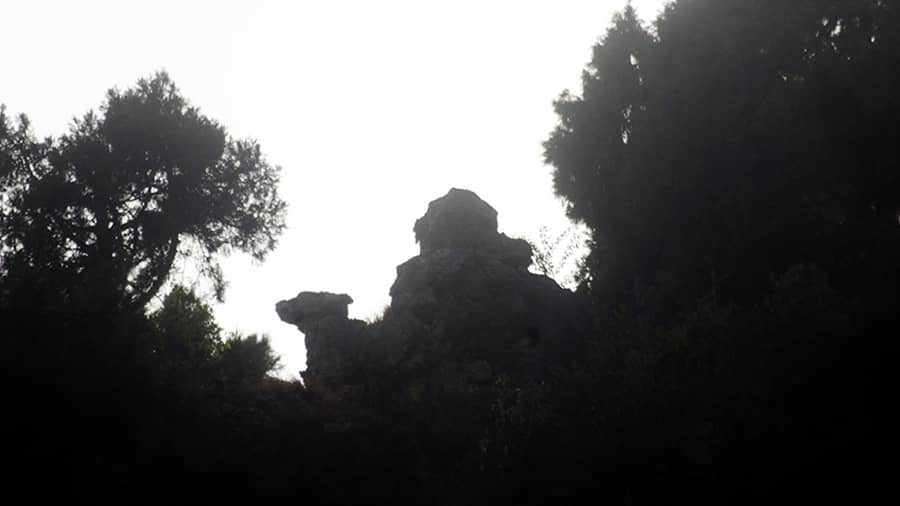
The view of the Camel Back Rock
Sadly, both the cemeteries are looked at and views from the gate show that they are not maintained. A signage next to the Christian cemetery gate narrates the history of cemeteries in Mussoorie. It mentions that the Camel Back Road Cemetery came up in 1829 and houses the mortal remains of John Hindmarsh, one of the 100 survivors of the brigade immortalised by Lord Tennyson’s Charge of the Light Brigade. The other notable personalities include Fredrick (Raja) Wilson, who settled in Harsil in Uttarakhand and made a fortune through trade of timbers. Also included in the list is John Lang, an Australian lawyer, who represented Rani Laxmibai in a lawsuit against the British. Sadly, the locked doors have kept the amazing history out of bounds.
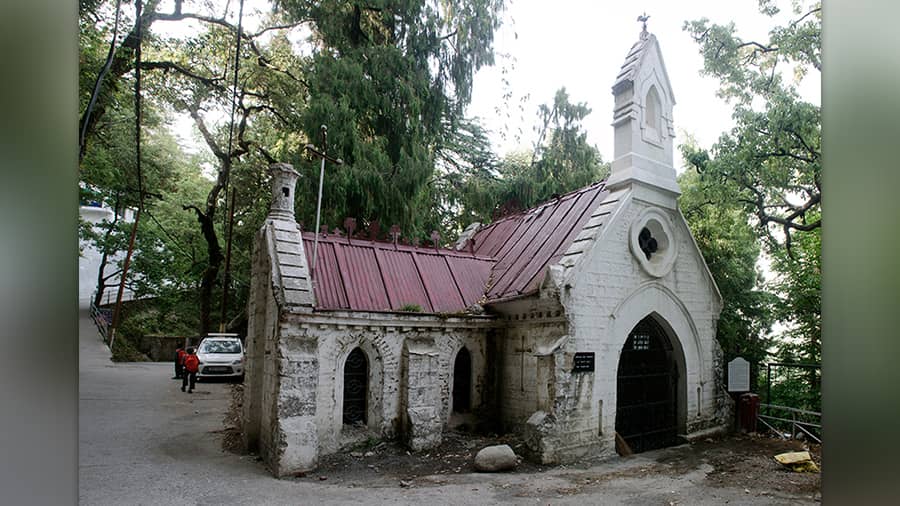
Mussorie Cemetery: The grand gateway of the Christian section of the Camel Back Road Cemetery
Further south of the cemeteries, the road leads to the Camel Back Rock, after which the road is named. It consists of jumbled up rocks in the form of a camel hump, complete with neck and head. The area also provides a great view of Mussoorie town. There are telescopes on rent offering closer views of the panoramic landscape. After Camel Back Rock, the road rises steeply and passengers have to get off the rickshaw for the rickshaw wallah to pull up his vehicle. The steep climb ends at the mall road, ending the trip.
Travel Information:
- The trip takes about one and half hours, which include a tea break and stops
- The charges are usually ₹600 for two adults and a child, however there is no fixed rate
